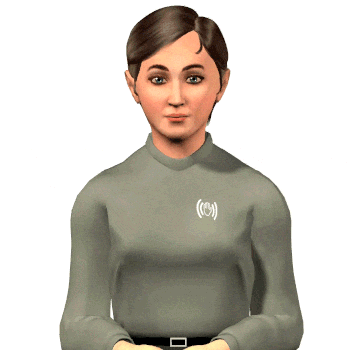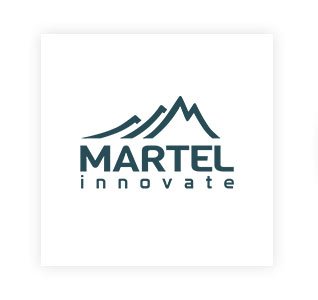EASIER project comes to an end

EASIER was a Horizon 2020 project responding to the ICT-57-2020 topic “an empowering, inclusive Next Generation Internet.” The project has been granted €3 991 591,25 by the European Commission and ran for 36 months, from January 2021 to December 2023. 14 institutions from eight European countries worked together as core partners of the EASIER project, including Martel with two important roles – project coordination led by the consulting department, and communication and dissemination carried out by Martel.
The main aim of EASIER was to design, develop, and validate a multilingual machine translation system which would act as a framework for barrier-free communication among deaf and hearing individuals, as well as provide a platform to support sign language content creation. The project concept was based on a unique combination of technological sign language resources and sign language linguistics expertise, allowing for exploitation of a robust data-driven sign language recognition engine, the incorporation of a signing avatar that integrates sign language grammar and prosody features to perform the most advanced synthetic signing currently available, as well as the state-of-the-art machine translation technology that consumes both annotated and unannotated data to deal with a wide range of use scenarios.
What has been achieved?
Leveraging the multidisciplinary expertise of its project partners and invaluable feedback provided by the project stakeholders, EASIER managed to achieve significant progress in enhancing the translation framework and reducing communication barriers. Some of the core project assets include:
- Mobile application and the corresponding desktop platform with a user-centered interface and the architecture for seamless translation across several spoken and sign languages.
- Multilingual translation models that support high-quality translation in low-resource language settings. The project introduced and improved three fundamental translation directions: Sign-to-Spoken, Spoken-to-Sign, and Spoken-to-Spoken.
- Advanced signing avatar technology that provides superior visualization of sign languages. The project’s signing avatar, “Paula,” (see Figure 1) has undergone significant enhancements during the project’s lifespan and now possesses advanced abilities to convey emotions.
- Cutting-edge technology for affect extraction, encompassing voice, text, and video inputs. The incorporation of these innovative features enabled the recognition and portrayal of emotions, enhancing the depth of communication experiences.
- Sign language recognition models that provide a bottom-up phonetic representation. EASIER employed cutting-edge 2D to 3D lifting technology, enhancing the recognition models.
- Multi-sign language lexical resource with an interlingual index as the backbone – a machine-readable and semantics-based lexicon. The project added multiple European sign languages to the Open Multilingual Wordnet with the aim to establish connections between signs with shared meanings across languages.
- Web applications that allow post-editing of machine translation output, including NERstar which includes automated processes during import, editing, and export to enforce limits and optimize subtitles and glosses; AZDV which provides corrections as graphical diagrams interpretable by software, enabling avatar animations as replacements for erroneous portions of machine translation output; and SignTube, an editing tool for alignment between the subtitle file, time code, and sign language video.
- Best practices and harmonized guidelines for generation and annotation of new sign language resources and training resources. EASIER has emphasized best practices for data generation, storage, and reuse and provided guidelines that play a pivotal role in ensuring the integrity and accessibility of sign language resources, fostering consistency and quality. Additionally, EASIER actively participated in several standardization development organizations, contributing to the establishment of industry standards in the field of accessible communication.
- An expanded network of stakeholders that helped the consortium understand and align with user needs and preferences. EASIER had placed great emphasis on involving the deaf community at each step of the project. This inclusive approach ensured that the assets were not only technologically advanced but also user-friendly and intuitive.
EASIER avatar, Paula, signing the name of the project.
Recognizing that innovation is an iterative process, EASIER has placed strong emphasis on the strategic reuse of its outputs and continuous improvement. The tools, models, and resources have been meticulously designed to be adaptable and extensible. By encouraging the reuse of project outputs, the EASIER consortium has fostered a collaborative environment where researchers and developers can leverage the results and achievements of EASIER as building blocks for their future projects. This cyclical process of reuse and improvement propelled sustained progress, creating a ripple effect of innovation within the accessible communication landscape. Through these collaborative efforts, EASIER has ensured that its contributions will serve as enduring resources, fostering a legacy of inclusivity and accessibility.
Success in terms of communication and dissemination
EASIER has also achieved success on the outreach level. The project was highly committed to communicating about its work and disseminating its results to not only advance the research but also sensitize the hearing population about deafness and deaf culture and raise awareness among the deaf community about the state of the art technologies aimed at reducing communication barriers. The community gathered around the EASIER project was multinational and uniquely interdisciplinary and comprised researchers, developers, interpreters, and the general public, including deaf and hearing citizens from across Europe.
A bespoke visual identity, including a sign project name
Prior to project kick-off, the Martel team developed a bespoke visual identity for EASIER, starting with a foundational element of any brand identity – color, as this is usually the first thing stakeholders see. To determine the palette that would work best for EASIER, the team leveraged the findings of color psychology and color theory: they looked at the emotional associations of colors to clearly convey EASIER brand personality and showcase optimism, creativity, and the project’s commitment to inclusiveness. When choosing the colors, it was also important that they worked together in harmony, which is why the team opted for an analogous brand color palette. Yellow was picked because it is an uplifting color that evokes happiness and optimism, but also because it is attention-grabbing; red orange because it is invigorating and engaging and because it symbolizes health and vitality; and gray because it stands for neutrality. Once the colors were chosen, the team moved to designing the project logo. The main objective was to synthesize sign language communication through an ideogram that recalls the hand movement of sign spelling. A textual part with the name of the project and the tagline have been added to support the ideogram. To further enrich the EASIER brand identity, deaf consortium members gave EASIER a sign name. They decided on a closed palm that opens because it fitted well within the overall visual identity of the project.
Project website
In the first months of the project, Martel launched the project website developed to act as an information hub. The website was developed with the users’ needs in mind. In addition to being multilingual, it featured a light and responsive design characterized by high contrast, a keyboard navigation bar, and a dedicated customizable accessibility plug-in providing the following accessibility tools: resize font (increase/decrease text to make it readable on any device), readable font, grayscale, high contrast, negative contrast, light background, and links underline. The EASIER website was selected as one of the three finalists of the 2021 .eu Web Awards competition, an annual online competition launched in 2014 by the European Registry for Internet Domains (EURid) to acknowledge the top .eu websites in various categories. EASIER was nominated within the Laurels category established for educational institutions, charitable organizations, and ongoing pan-European projects. Following EASIER’s presence at the .eu Web Awards competition final, EURid has invited the project to give a testimonial, allowing the EASIER consortium members to shed light on their day-to-day work, online presence, and the way .eu helps them to achieve project goals.
Communication campaigns
During the project lifespan, EASIER ran several communication campaigns, including “Did You Know That?” consisting of a series of informative articles written with the aim of bringing the subject of deafness, sign languages, and deaf culture closer to the hearing community and “Discover EASIER” launched with the aim of shedding light on the technical work performed within the project. All articles within the “Discover EASIER” campaign were available in International Sign and written English and focused on showing the work behind the scenes of the project while also explaining how the advancing technology can help reduce communication barriers.
Furthermore, EASIER released 55 news articles, produced numerous videos, published over 40 scientific papers, and organized 10 events, engaging large groups of stakeholders including policymakers and specialists from multiple professions, such as animation, avatars, software development, computer science, linguistics, lexicography, deaf education, interpreting, and translation, among others.
Although complex and ambitious, the EASIER project was, above all, a wonderful and rewarding human-oriented adventure that has taught us a lot about collaboration. “We have learned a great deal about how to collaborate effectively within highly diverse and multilingual teams. We also acquired deeper and more practical knowledge about inclusive communication, which we will gladly and proudly utilize in current and future projects,” said Martelians who were involved in the project.
 Horizon Europe
Horizon Europe


